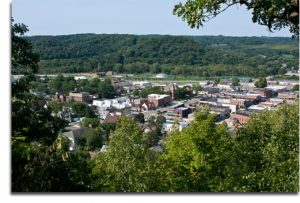Discover it Here…
The Richland Area is ready for you to find what you are looking for! If it is the unspoiled natural beauty, scenic views, friendly people, unique experiences, or all of the above you will find it here. Whether you are seeking a serene relaxing getaway or jaw dropping excitement, Richland Center offers visitors a variety of opportunities.
Situated halfway between Madison and LaCrosse at the intersection of US 14 and State Highway 80, Richland Center is an easy drive through the beautiful rolling hills of the Driftless Area. Snowmobiling, horse back-riding, kayaking and canoeing, trout fishing, golfing, hiking are some of the many activities found in the Richland Center area.


 to the site because of its abundant water power, fertile prairies, and its proximity to the geographical center of Richland County. Haseltine offered to donate land to the county if Richland Center was voted the county seat. In 1852 the Wisconsin Legislature formally declared Richland Center as the seat of justice for Richland County. The present Richland County courthouse was built at Richland Center in 1889.
to the site because of its abundant water power, fertile prairies, and its proximity to the geographical center of Richland County. Haseltine offered to donate land to the county if Richland Center was voted the county seat. In 1852 the Wisconsin Legislature formally declared Richland Center as the seat of justice for Richland County. The present Richland County courthouse was built at Richland Center in 1889.